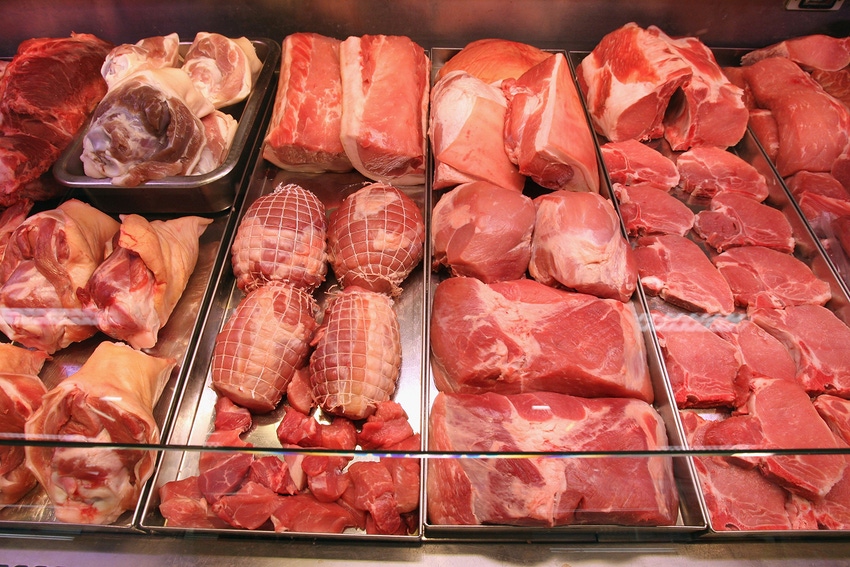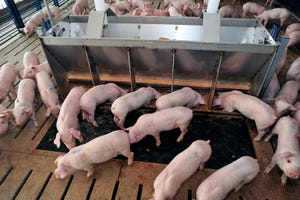Pork specialty products increasing, but how much is Prop 12 compliant?
Are pork sales in California already being impacted?

Since July 1, when California’s Proposition 12 came into effect, two questions have been lingering throughout the industry: How much product will be Prop 12 compliant by Jan. 1, 2024, and how will this impact pork sales in California?
While data on Prop 12 compliant pork is not publicly available, economist Lee Schulz, Iowa State University, points to data from the USDA Agricultural Marketing Service and the Livestock Marketing Information Center that shows specialty product and volume has increased as a comprehensive share. The pork specialty programs include open-pen gestation and crate-free, but also antibiotic-free, no-antibiotics-ever, pre-priced and labeled, color graded, breed specific, quality graded and organic.
“It's aggregated because of confidentiality, but it provides the market where Proposition 12 compliant pork is being put and will be put going forward,” Schulz says. “When we compare that to the comprehensive report, which includes all pork except for specialty, but also includes the export market, you'll see that as a share, the specialty has been increasing. Currently it's about 8.6%, and if you remove the exports, it's about 9.8% of the share.”
If confidentiality can still be maintained, Schulz says he sees value in breaking out the housing component to better represent what share of production is being represented by hogs that meet those characteristics.
Besides volume, pricing for these specialty products should also be considered.
“Comparing specialty products to products that were sold via formula negotiated or forward contracted, I'll say that those premiums have quite a bit of variability, but as of late to me seem to have increased,” Schulz says. “This is something to monitor going forward to see if those premiums continue for the latter part of 2023 and certainly into 2024.”
While California accounts for about 13% of U.S. pork production, Schulz says he likes to remind people that Californians do not consume hogs, they consume pork.
“The least common denominator is actually what they eat the most of, and so I think that suggests we're going to need more production, that pig production that actually meets those guidelines to meet those consumer markets for the various cuts,” Schulz says.
While producers are incurring the cost to update facilities to meet Prop 12 compliance, Schulz says packers are the “real linchpin in that supply chain.”
“How they handle this, they're going to incur higher costs to certainly segregate this product, if that's on separate production lines, if that's slaughtering, at different times, different days of the week," Schulz says. " And we can all think through those possibilities, but all that increased costs as well to be able to segregate this product."
Catch more of our conversation from the Global Hog Industry Virtual Conference Update with Schulz as well as Domenic Varricchio, Pluto Commodities here.
Are pork sales in California already being impacted?
On July 16, the Superior Court for the County of Sacramento issued an order allowing non-compliant pork that was in the supply chain before July 1 to continue to be sold in the California market until Dec. 31. Despite the attempt to soften supply chain disruptions or price spikes, a new study out of the USDA Chief Economist’s Office shows there have been signs of strain in California since July 1.
Using Circana retail-level scanner data, lead author and a Ph.D. candidate with Texas A&M University, Hannah Hawkins, says pork prices have indeed surged since then. The state’s average sales price of pork ribs was 25% higher and loins 43% higher in August, compared to June. During this same period, pork rib average sales for the rest of the United States was up 6.4% while loins were down 5.4%.
Total volume has also been compromised as fresh pork purchased in California dropped 23% from June to August. Hawkins notes this volume is 37% less than the average volume sold in California in August from 2020 to 2022. She says the state’s volume was on pace with the rest of U.S. volume patterns up until July 2023.
Find out more about Hawkins’ study here.
About the Author(s)
You May Also Like





